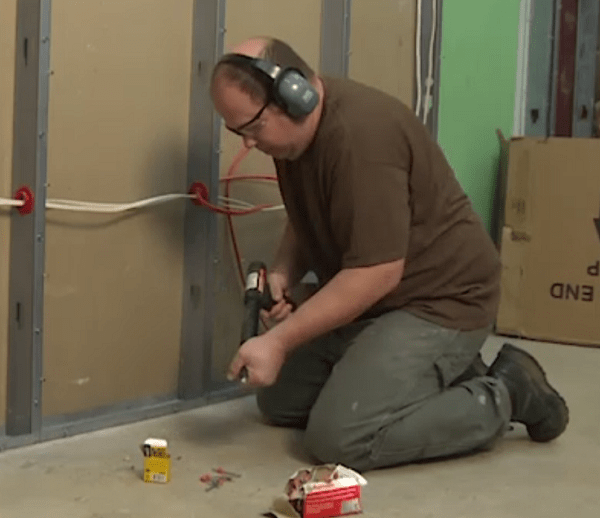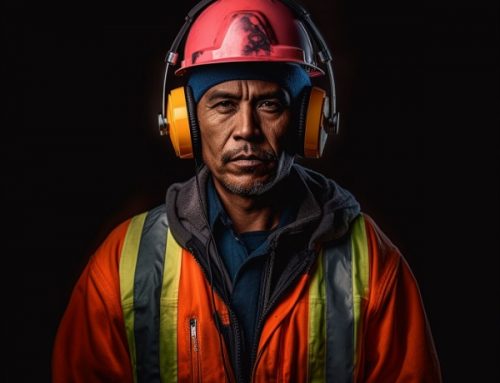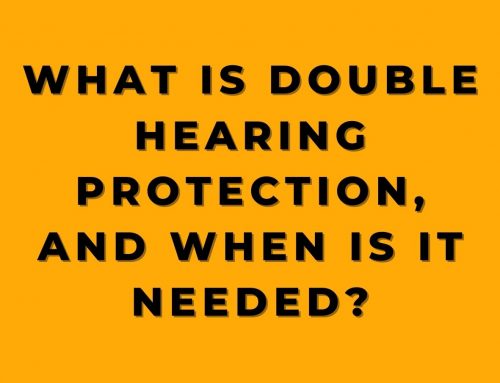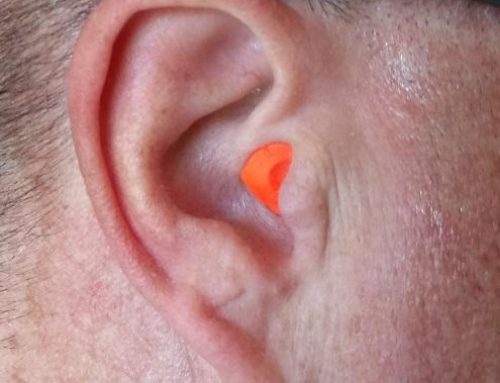Introduction
Workplace hearing loss is a common but preventable problem. This article summarizes key information from an online training course on OSHA’s Occupational Noise Exposure Standard. We’ll explore the hazards of loud noise, how OSHA regulates sound levels, the anatomy of hearing, types of hearing protection and more. With the right knowledge, policies and protective equipment, employees in noisy environments can preserve their hearing for life.
The Dangers of Loud Noise on the Job
Exposure to loud noise is one of the most common causes of preventable hearing loss. The Bureau of Labor Statistics estimates that tens of thousands of U.S. workers suffer permanent hearing damage from excessive noise at work every year. This “occupational noise-induced hearing loss” can emerge slowly over time or occur suddenly due to short exposures to extremely loud sounds.
To combat this issue, the Occupational Safety and Health Administration (OSHA) created the Occupational Noise Exposure Standard. This regulation requires employers to implement hearing conservation programs when average noise exposure reaches 85 decibels over an 8-hour work shift. The standard also sets a maximum permissible exposure limit of 90 decibels over 8 hours.
But before we dive into the details of OSHA policies, let’s build some basic knowledge about how sound works and how it can harm our hearing.
The Properties of Sound: Frequency, Intensity and Duration Sound consists of vibrations and pressure waves that travel through the air and into the ear. There are three important characteristics of sound that determine its potential to damage hearing:
- Frequency – The number of wave vibrations per second, measured in Hertz (Hz). High frequencies correspond to high-pitched sounds.
- Intensity – Also called volume or loudness. Measured in decibels (dB). The higher the dB level, the louder the sound.
- Duration – The length of time you are exposed to the sound. Long exposures are more hazardous than brief ones.
In general, high-pitched, high-volume sounds that continue for long periods pose the greatest risk of hearing damage. Work environments with these noise characteristics require vigilant hearing protection efforts.
How the Ear Works To understand why loud noises harm hearing, it helps to know a bit about the anatomy of the ear. Sound travels in waves through the air until they reach the outer ear. Then sound waves get channeled down the ear canal and cause the eardrum to vibrate.
These vibrations pass to the three tiny bones of the middle ear, which amplify them. The bones transmit the vibrations to the fluid-filled cochlea of the inner ear. The cochlea contains thousands of delicate hair cells attached to nerve endings. As the hairs sway back and forth, they trigger nerve signals that travel to the brain.
Much like how strong winds can permanently bend wheat stalks until they snap, intense noise exposure can overwhelm and damage the hairs cells in the cochlea. Once these cells are broken, they cannot regrow, resulting in permanent hearing impairment.
OSHA’s Occupational Noise Exposure Standard
With hearing anatomy and sound characteristics in mind, let’s examine OSHA’s strategy to prevent occupational hearing loss. As mentioned earlier, OSHA mandates a hearing conservation program when average workplace noise reaches 85 dB over an 8-hour shift. This “action level” triggers requirements for:
- Noise monitoring and assessment
- Hearing protective equipment
- Training programs
- Audiometric testing
OSHA also limits permissible noise exposure to an average of 90 dB over 8 hours. Also called the “permissible exposure limit”, this cap promotes hearing health by restricting daily noise doses. Employers must use engineering and administrative controls to keep noise below 90 dB first, before relying solely on hearing protective equipment.
Types of Hearing Protection Devices
When noise levels exceed 90 dB despite other protections, employees must use personal protective equipment to block hazardous sound waves. Common types of hearing protection include:
Earplugs – Inserts placed in the ear canal to lower noise 15-30 dB. Convenient but can irritate ears.
Earmuffs – Sound-blocking cups worn over the ears to reduce noise 15-30 dB. Bulky but easy to use.
Canal Caps – Earplugs mounted on a headband for intermittent noise. Less protective than earmuffs/plugs.
Employers must provide equipment that brings employee exposure down to at least 90 dB. Take care to inspect, clean and correctly fit hearing protection. Devices that are damaged, dirty or worn improperly will not provide adequate noise reduction.
Monitoring Your Hearing Health with Audiometric Testing
A final key part of hearing conservation programs is audiometric testing. These hearing tests establish a baseline audiogram measuring an employee’s hearing ability. Yearly audiograms are then compared to the baseline to detect early changes in hearing, such as those caused by workplace noise.
If tests show a 10 dB decrease in hearing at certain frequencies, known as a Standard Threshold Shift, the employer must notify the employee. Additional testing may be performed and precautions taken to prevent further loss. Audiometric screening ensures noise hazards are identified before permanent damage occurs.
Takeaways on Preventing Occupational Hearing Loss Hazardous noise levels are all too common in modern workplaces. But with a basic understanding of sound, proper use of protective equipment and adherence to OSHA guidelines, employees can safeguard their hearing for life.
Remember, hearing loss is permanent but also preventable. Do your part to reduce on-the-job noise risks by using the hearing protection provided, following training, reporting concerns and attending your annual hearing tests. Your ears will thank you decades from now.
You’ve just walked through the intricate landscape of hearing protection at work, guided by OSHA’s stringent standards. We’ve dissected the scientific underpinnings of sound, its potential dangers, and the human ear’s delicate anatomy. We’ve also explored the various types of protective equipment, and the importance of regular audiometric tests. While all these pieces of knowledge are crucial, they become truly empowering when integrated into a comprehensive, interactive training regimen. This begs the question: How can you solidify this knowledge into actionable skills that become second nature, ensuring that you and your employees are not just compliant, but truly protected? The answer lies ahead.
Are You Gambling With Your Hearing Health At Work? Don’t Leave It to Chance!
We live in a cacophony of noise—machinery roaring, coworkers shouting, constant chatter—it’s all a part of the modern workplace. But did you know that nearly 50 million Americans are losing the essence of sound, their hearing, because of this constant exposure?
Stop. Listen. This isn’t just static. This is a ticking time-bomb for your hearing health.
OSHA recognized this colossal challenge and instituted the Hearing Conservation Standard to shield your ears from harm. But how well are you protected? What if there was a way to not only comply with regulations but truly understand and minimize the risk?
Introducing Our “Hearing Conservation and Safety” Full-Length Interactive Courses.
Why Choose Our Full-Length Courses?
- Mechanics of Sound Unveiled: We dig deep into the science behind sound, so you can understand what you’re up against.
- Ear Anatomy Decoded: Knowledge is power. Learn the intricacies of how your ear works to better protect it.
- Hazardous Noise Deciphered: Identify risks before they become irreversible damage.
- Protective Gear Explained: From ear muffs to ear plugs and canal caps—know which gear is your best shield.
- Regular Hearing Tests: Because prevention is better than cure, our course emphasizes the need for timely tests to catch problems before they escalate.
What Sets Us Apart?
- Fully Interactive: This isn’t another ‘read and forget’ manual. Engage in interactive lessons that help you internalize crucial knowledge.
- English and Spanish: Language should never be a barrier to safety. That’s why we offer all courses in both English and Spanish.
Don’t let your job rob you of the sweet melodies of life. Act now and take the first step toward safeguarding your hearing, for today and the years to come.
Click Below for a Demo and Begin Your Journey to Auditory Safety!







